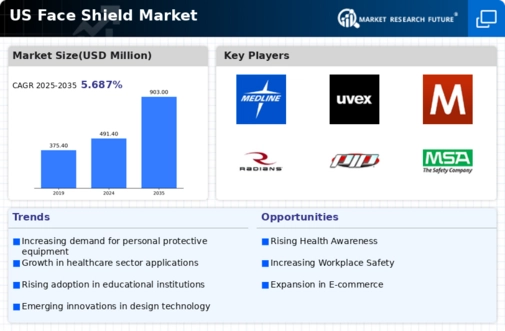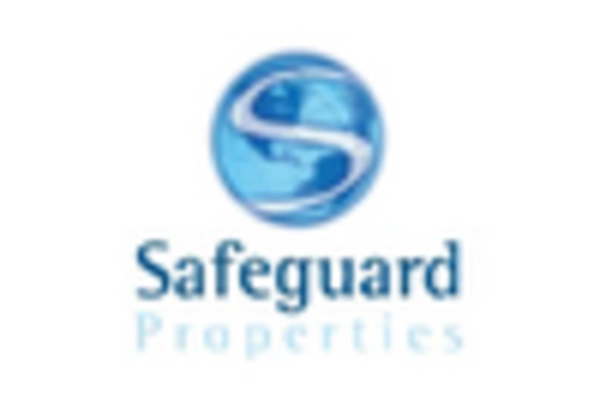Expansion of End-User Industries
The face shield market is experiencing growth due to the expansion of end-user industries such as healthcare, manufacturing, and food services. As these sectors evolve, the need for effective protective equipment becomes more pronounced. For instance, the healthcare industry continues to prioritize the safety of both patients and staff, leading to increased procurement of face shields. Similarly, the manufacturing sector is adopting face shields to comply with safety regulations and protect workers from hazards. The face shield market is projected to benefit from this expansion, with estimates indicating a potential market size increase of $500 million by 2027, driven by the growing demand from these industries.
Increased Focus on Sustainability
Sustainability is becoming a critical consideration in the face shield market, as consumers and businesses alike seek eco-friendly options. Manufacturers are exploring biodegradable materials and recyclable designs to meet this demand, which could reshape the market landscape. The face shield market is likely to see a shift towards products that not only provide protection but also align with environmental values. This trend may attract a new customer base that prioritizes sustainability in their purchasing decisions. Analysts predict that the market could grow by 10% as companies innovate to create sustainable face shield solutions, reflecting a broader commitment to environmental responsibility.
Growing Awareness of Health and Safety
There is a rising awareness regarding health and safety practices among the general public and businesses, which is positively influencing the face shield market. Educational campaigns and public health initiatives have highlighted the importance of protective gear in preventing injuries and infections. This heightened awareness is prompting organizations to invest in face shields as a preventive measure, thereby expanding the market. The face shield market is likely to see a sustained increase in demand, particularly in sectors such as education and hospitality, where safety protocols are being reinforced. Market analysts suggest that this trend could lead to a 20% increase in sales over the next few years.
Regulatory Support for Safety Equipment
The face shield market benefits from robust regulatory frameworks that mandate the use of personal protective equipment (PPE) in various sectors. In the US, agencies such as OSHA and the CDC have established guidelines that encourage the adoption of face shields in workplaces, particularly in healthcare and manufacturing. This regulatory support not only enhances safety but also drives market growth, as compliance becomes a necessity for businesses. The face shield market is likely to see increased demand as organizations prioritize employee safety and adhere to these regulations. Furthermore, the market is projected to grow at a CAGR of approximately 6% over the next few years, indicating a strong alignment between regulatory requirements and market expansion.
Technological Advancements in Materials
Innovations in materials science are significantly impacting the face shield market. The introduction of lightweight, anti-fog, and scratch-resistant materials enhances the functionality and comfort of face shields. These advancements are crucial for users in various industries, including healthcare, construction, and food processing, where visibility and durability are paramount. The face shield market is experiencing a shift towards high-performance materials that not only meet safety standards but also improve user experience. As manufacturers invest in research and development, the market is expected to witness a surge in product offerings, potentially increasing market share by 15% in the next five years.

















Leave a Comment